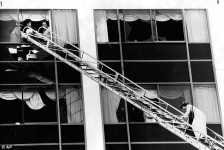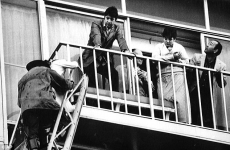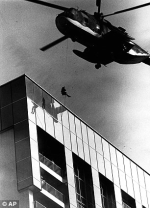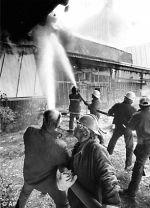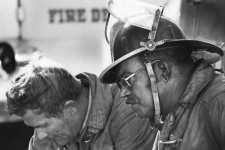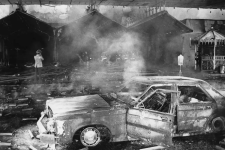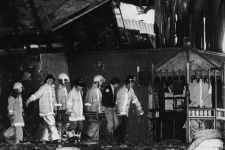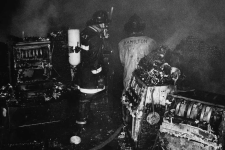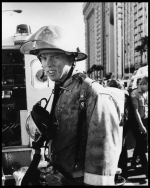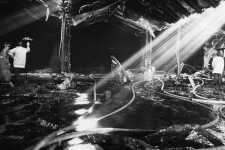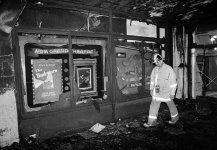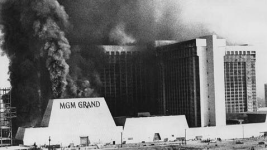
The MGM Grand Fire occurred on November 21, 1980 at the MGM Grand Hotel and Casino (now Bally's Las Vegas) in Las Vegas, Nevada, USA. The fire killed 85 people, most through smoke inhalation. The tragedy remains the worst disaster in Nevada history, and the third-worst hotel fire in modern U.S. history, after the 1946 Winecoff Hotel fire in Atlanta that killed 119 people and the Dupont Plaza Hotel, San Juan, Puerto Rico fire on December 31, 1986, in which 97 perished.
Bally's, previously called the MGM Grand at the time of the fire. The current MGM Grand is at a different location. At the time of the fire, approximately 5,000 people were in the hotel and casino, a 26-story luxury resort with more than 2,000 hotel rooms. Just after 7:00 on the morning of November 21, 1980, a fire broke out in a restaurant known as The Deli. The Clark County Fire Department was the first agency to respond. Other agencies that responded included the North Las Vegas Fire Department, Las Vegas Fire & Rescue and the Henderson Fire Department. UH-1N (Huey) and CH-3E
(Jolly Green Giant) helicopters from the 1st Special Operations Wing out of Hurlburt Field, FL (which were deployed to Nellis AFB to participate in Red Flag '80) were the main part of a helicopter rescue effort that pulled 1000 people from the roof of the MGM Grand. Smoke and fire spread through the building, killing 84 people and injuring 650, including guests, employees and 14 firefighters. While the fire primarily damaged the second floor casino and adjacent restaurants, most of the deaths were on the upper floors of the hotel, and were caused by smoke inhalation. Openings in vertical shafts (elevators and stairwells) and seismic joints allowed toxic smoke to spread to the top floor.
The disaster led to the general publicizing of the fact that during a building fire, smoke inhalation is a more serious threat than flames. Seventy-five people died from smoke inhalation and carbon monoxide poisoning, four from smoke inhalation alone, three from burns and smoke inhalation, only one person died from burns alone, and one person died from massive skull trauma, caused by jumping from a high window.
The fire was caused by an electrical ground fault inside a wall soffit. The wiring inside the wall was used to power a refrigeration unit for a food display cabinet in the deli. The vibration of the machine caused the wires to rub against each other, and the friction-damaged wires arced and caused a fire, which was detected hours later by a hotel employee. The fire spread to the lobby, fed by wallpaper, PVC piping, glue, and plastic mirrors, racing through the casino floor at a rate of 15–19 ft (4.6–5.8m) per second until a massive fireball blew out the main entrance along The Strip. Seven people died in the casino. The burning material created toxic fumes and smoke, which caused the majority of the deaths.
Due to faulty smoke dampers within the ventilation duct network, the toxic fumes circulated throughout the hotel's air circulation system, accelerating the spread of the poisonous air.
Most deaths occurred in the stairwells, where the doors locked behind each person as the only open doors in the stairwell were on the roof and on the ground floor. Most of the victims died from smoke inhalation, many of them in their sleep.
The fire was confined to the casino and restaurant areas. The hotel was equipped with a fire sprinkler system that performed properly by keeping the fire out of that section of the building. The area with the most fire prevention was in the money counting area, not in individual rooms or on the casino floor. National Fire Protection Association (NFPA) studies show that in this fire the hotel occupants did not exhibit panic behavior. Instead, many took rational steps to preserve their lives. Examples of this include putting towels around doors (to block out smoke), notifying other occupants, offering refuge in their rooms, and using wet towels for their faces.
The hotel was repaired and improved, including the addition of fire sprinklers and an automatic fire alarm system throughout the property, and sold to Bally's Entertainment, which changed the name to Bally's Las Vegas. Similar upgrades were also made to the nearly identical property (now the Grand Sierra Resort) in Reno, Nevada. The tower in which 85 people died is still operating as part of the hotel today. A second tower, unaffected by the fire, opened in 1981. The present MGM Grand hotel-casino was built just to the south, near the northeast corner of Las Vegas Boulevard and Tropicana Avenue.
On February 10, 1981, just 90 days after the MGM fire, another fire broke out at the Las Vegas Hilton. Because of the two incidents, there was a major reformation of fire safety guidelines and codes.
MGM Grand Fire Las Vegas 1980
https://youtu.be/4o8dRs1R6O0
Chemistry of Fire MGM
https://youtu.be/7EOVMysDM0I
